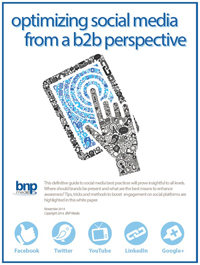In recent months, I discussed things to do during the recession to enhance and maybe change your business skill sets. This month, I will compare our building industry to a couple of major companies who didn’t keep pace in their business sectors. It’s my belief the design community, in particular, is trudging its way through the 21st century, continuing where it left off at the end of the 20th century as a commodity to architects and contractors. And while I watch the construction industry strive to enhance its services, and even broaden its business skills, I don’t see them much better off, either. Basically, we are an industry that is slow to change and certainly aren’t in the league with high-tech industries when it comes to reinventing itself.
So what’s my point? Well, I was having a conversation with a design engineer about how dependent we are on the business copy machine, which wasn’t working at the time. We talked about Xerox and how it was perceived to be the only business copy machine, and that when you wanted a copy machine, you had to consult Xerox. The same could be said for IBM, who was perceived to be the only computer company in the business while we ignored other companies like Apple. Today, both companies are still around, but say, “Please make me a Xerox of a document,” to a member of one of the younger generations and he won’t know what you are asking him to do. And IBM? Do they make anything like a Blackberry or Nano?
CONTINUOUS CHANGE NEEDED
You could say technology is synonymous with the phrase “continuous change.” Certainly, the design community won’t be mistaken for continuous change. Think about it: design engineers still specify 19th-century brass valve tags and multiple volumes of O&M manuals. Do you even get an O&M manual with a Blackberry, or do you go online to find out how to use it?Contractors are quick to tell you they are the ones who champion BIM (building information modeling) software, but that’s because it benefits them and anything that benefits the contractor eventually ends up as money in their pocket. Money in my pocket! I am all for that concept! Construction managers want to lead and control and have invested heavily to have in-house BIM capabilities as well as in-house engineers. So why isn’t the design community embracing this idea of making money and taking the lead?
What I’m told is that if you lead, you take all the risk. But in my experience working for a mechanical contractor, and later with a CM, our exposure was more like 20%, with 80% of the risk placed on our subcontractors. You could say we really were taking 20% of the risk and delegating 80% of the risk to others. The design community has about 6% to 10% exposure (fee vs. total building cost), and yet they find themselves potentially taking all the risk. If a system doesn’t work, whose fault is it?
As one of my former CM bosses said, “We’re like a traffic cop. If it doesn’t work, it is because the subcontractors didn’t install it per the drawings and spec, or the design team didn’t design it correctly. We’re there to look out for the owner by charging the bad guy with the crime.” For that, our firm got an additional fee above and beyond the markup we got from the subcontractors. Additional service fee! I’m all for that concept, too!
TAKING THE LEAD
The general contractor of the past reinvented himself into a CM and sometime designer-builder to what we now call an IPD (integrated project delivery) player. The designer is still the same designer she was 40 or 50 years ago, and still complaining about not enough fees and not enough time to do the job right. My quest has always been to continue to grow in this industry, because you can and it is more rewarding than 40 years of cranking out drawings and specs while complaining about the process.Up to this point, architects have taken the design lead, and I don’t think engineers have had a lot of success to show for that approach. I think it’s time the engineers take their turn as the design team lead and show the building owners we can be proactive in the building program process, rather than reactive as we worry about risk.
To do this, we need to embrace technology and keep pace with technology. We also need to look to the future and apply it to the present.
I personally have no problem with taking responsibility for an HVAC design, especially if I can manage the air and water balancing contractor and the automatic temperature control contractor. In the past and even now, I find both of them strong business partners when it comes to delivering a project that works, and we all make a profit! I’m all for that concept!ES




